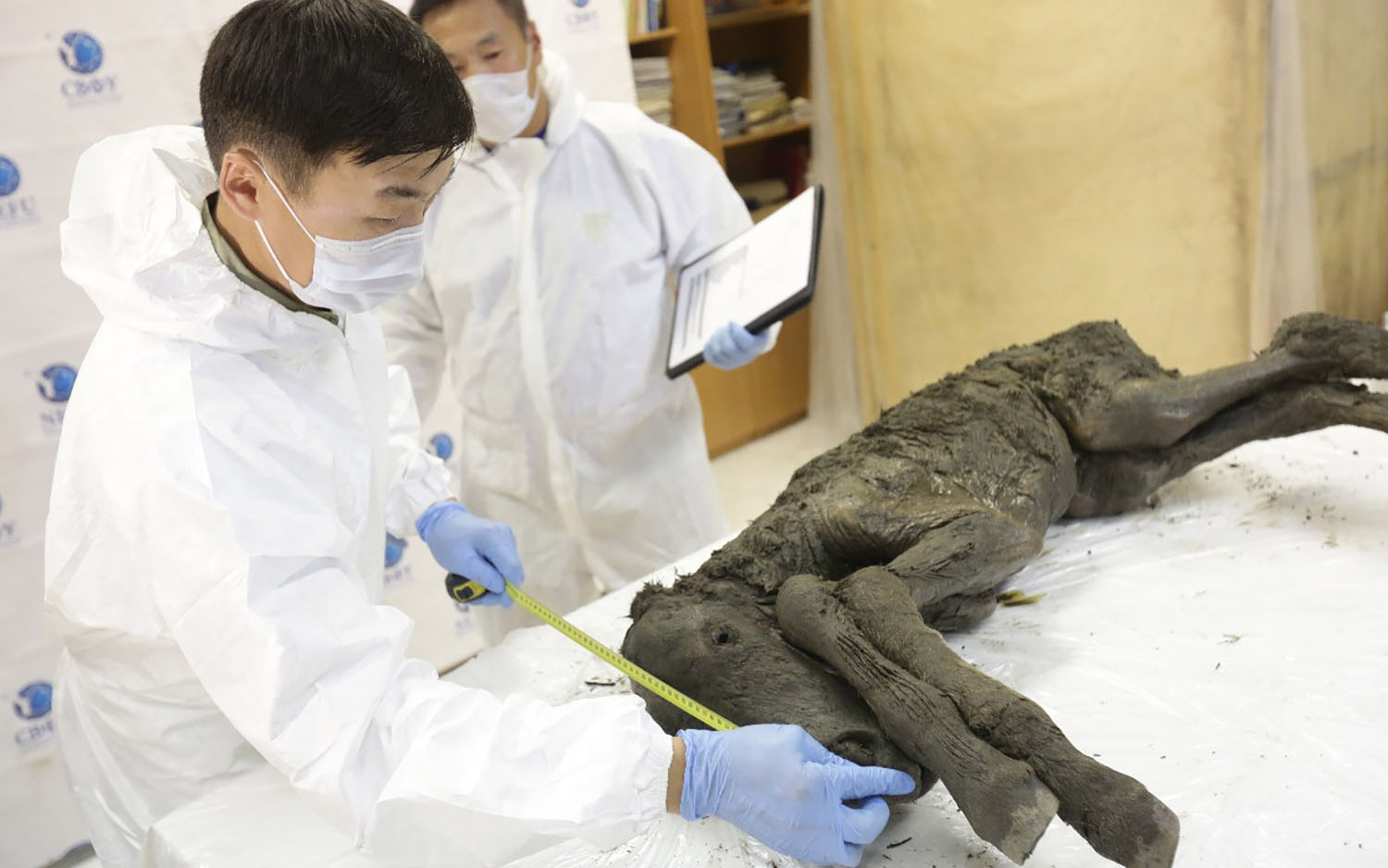This Plan to Bring Back an Extinct Ice-Age Horse Species Is an Extreme Long Shot, Scientists Say

A team of scientists in Siberia is hopeful that a mummified 40,000-year-old baby horse can provide critical genetic material for cloning the extinct ice-age species.
But experts told Live Science that they are skeptical that the scientists will be able to find viable DNA on the body at all, let alone overcome the enormous challenges of cloning a species that's been extinct for millennia.
Revived after millennia?
The preserved foal's body was discovered in August and was excavated from melting permafrost in the Batagaika crater in Yakutia, a region in eastern Russia. Researchers working with the frozen remains recently told The Siberian Times that they are investigating whether the remains will yield living cells that could be used to clone the ancient baby horse. [See Photos of the Perfectly Preserved Ice-Age Foal]
According to The Siberian Times, one of the scientists involved in the analysis of the mummified horse is Woo-Suk Hwang, a stem-cell researcher and cloning pioneer from South Korea. Hwang, a former professor at South Korea's Seoul National University, came under fire in 2006 for falsifying data, and was convicted three years later of bioethical violations and embezzlement, Nature reported in 2009. He now helms Sooam Biotech Research Foundation, a South Korean company that researches and performs animal cloning — primarily dogs, Live Science previously reported.
Scientists from Russia and South Korea — including Hwang — are already collaborating in an attempt to clone a woolly mammoth, and they are now exploring the possibility of extracting living cells from the preserved horse, which could potentially be used to create a clone, Hwang told The Siberian Times.
"If we find only one live cell, we can clone this ancient horse," Hwang said. "We can multiply it and get as many embryos as we need."
An extinct horse could prove easier to clone than a mammoth because a modern horse could serve as the embryo's surrogate, while a cloned mammoth embryo would need to be implanted in a female elephant, Hwang explained. Elephants are in the same family as extinct mammoths, but they are not close relatives — so a cloned "mammoth" would more likely be a genetically engineered elephant-mammoth hybrid, he said.
Sign up for the Live Science daily newsletter now
Get the world’s most fascinating discoveries delivered straight to your inbox.
Nevertheless, cloning an extinct ice-age horse could be a step toward cloning a mammoth, as "it will help us to work out the technology," Hwang told The Siberian Times.
"Astronomical" odds
However, several scientists who were not involved with the analysis of the foal expressed doubts that it would be possible to successfully clone the mummified horse.
"Many of [the] same challenges will be faced here as with attempts to clone mammoths," Beth Shapiro, a professor of ecology and evolutionary biology at the University of California, Santa Cruz, told Live Science in an email.
Cloning is possible only when the original animal's DNA is intact, and the majority — if not all — of the DNA in ice-age specimens is typically degraded "into tens of millions of pieces," Love Dalén, a professor of evolutionary genetics at the Swedish Museum of Natural History in Stockholm, told Live Science in an email.
If enough DNA from the mummified horse's remains can be recovered, scientists might be able to construct a genome sequence by comparing the DNA of the extinct foal to the genomes of living horses, Shapiro added.
But the chance of finding an undamaged nucleus with an intact genome, or even a frozen cell that could be recovered, "is astronomical," Vincent Lynch, an assistant professor in the Department of Human Genetics at the University of Chicago, told Live Science in an email.
"Scientists rarely say something is impossible, but it is certainly approaching it," Lynch said.
Original article on Live Science.

Mindy Weisberger is an editor at Scholastic and a former Live Science channel editor and senior writer. She has reported on general science, covering climate change, paleontology, biology and space. Mindy studied film at Columbia University; prior to Live Science she produced, wrote and directed media for the American Museum of Natural History in New York City. Her videos about dinosaurs, astrophysics, biodiversity and evolution appear in museums and science centers worldwide, earning awards such as the CINE Golden Eagle and the Communicator Award of Excellence. Her writing has also appeared in Scientific American, The Washington Post and How It Works Magazine. Her book "Rise of the Zombie Bugs: The Surprising Science of Parasitic Mind Control" will be published in spring 2025 by Johns Hopkins University Press.









